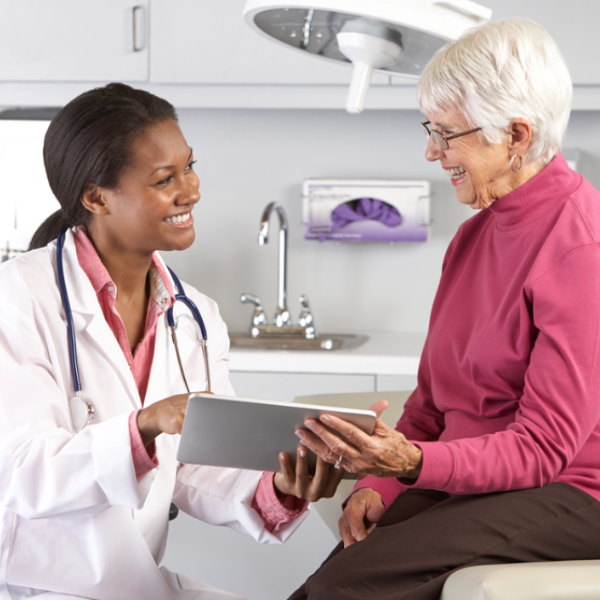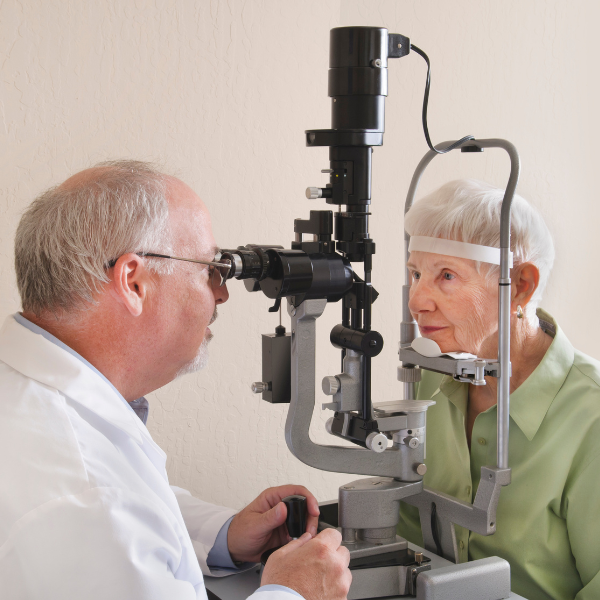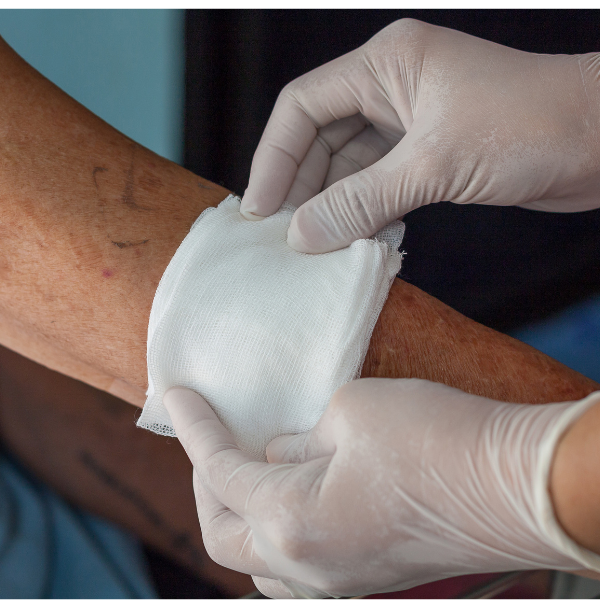Remote monitoring has come a long way from its early days of tracking simple biometric data. In diabetes care, some of the first advances focused on remote temperature monitoring, which made it possible to detect inflammation that can lead to diabetic foot complications. What started as a focused innovation for limb preservation has since evolved into a powerful approach for predicting and preventing a much wider range of risks, including falls and heart failure.
This evolution represents more than technological progress. It reflects a shift in how we think about care, moving from disease management to whole-person monitoring that helps patients stay safer, more mobile, and out of the hospital.
How Remote Temperature Monitoring Sparked a New Era in Prevention
The earliest advances in remote temperature monitoring, or RTM, proved transformative for people with diabetes. By tracking subtle increases in foot temperature, clinicians could detect inflammation days or even weeks before a diabetic foot ulcer appeared. This change allowed for early intervention and prevention of limb-threatening complications.
This innovation also provided something deeper: proof that small, daily data points can reveal big changes in health. RTM demonstrated that physiological patterns, when viewed over time, could predict clinical deterioration long before traditional methods caught up. The same principle is now being applied to other complications of diabetes, where the earliest indicators are often hidden in plain sight.
Why Fall Prevention Belongs in Every Diabetes Care Plan
Falls are a growing but underrecognized threat to individuals living with diabetes. Research shows that patients with Type 2 diabetes are significantly more likely to experience recurrent or severe falls, suffer bone fractures, and face higher hospitalization rates due to fall-related injuries compared to people without diabetes.
Several factors contribute to this increased risk:
- Neuropathy, which affects more than half of people with diabetes, reduces sensory feedback and balance awareness.
- Retinopathy, affecting up to 40% of patients, impairs vision and further increases instability.
- Muscle weakness and cognitive decline, both common in diabetes, decrease reaction time and confidence while walking.
- Polypharmacy is also a major contributor to fall risk. Many individuals with diabetes take multiple medications for their comorbidities, and some of these drugs can cause dizziness, low blood pressure, or confusion that increases instability and the likelihood of falls.
These findings also align with long-term research published in Diabetes Care by Rebecca K Yau and colleagues that followed more than three thousand older adults for about ten years. The researchers found that older adults with diabetes were more likely to experience a serious fall that required hospitalization. The risk was about three times higher for people using insulin. Within the diabetes group, those who had prior falls, poorer standing balance, or A1C levels of 8% or higher were more likely to be hospitalized for a fall-related injury.
Despite this, fall prevention has traditionally been treated as a separate challenge from diabetes management. With new remote monitoring technology, we can now measure both stability and temperature through the same device, capturing two distinct data points that provide unique insights into patient health. Stability monitoring helps identify changes in postural stability, while temperature data continues to help detect inflammation that may signal early foot complications. Together, these separate measures give care teams a more complete picture of a patient’s overall risk.
In a 2021 study published in Frontiers in Public Health, Katharine Forth, Charles Layne, and Stefan Madansingh found that when older adults were able to self-monitor their balance using a simple testing platform, total falls decreased by 74% and the number of people who fell was cut by more than half. The researchers concluded that regular balance monitoring helped individuals recognize and improve their stability, reducing the overall risk of falls.
These insights make it possible to intervene early, providing personalized education, therapy referrals, or home safety adjustments before a fall occurs.
Heart Health and Diabetes: Where Remote Monitoring Makes the Difference
Another major frontier in remote monitoring is heart failure management. As it turns out, over 30% of all people with Type 2 Diabetes eventually develop cardiovascular disease, and it is the leading cause of death in this population. Despite decades of progress, heart failure remains one of the leading causes of hospital readmission in the United States.
Studies show that up to 90% of heart failure hospitalizations are due to fluid congestion, which can often be detected through small, progressive increases in body weight days before symptoms appear. Yet for many patients, the early warning signs go unnoticed because daily self-weighing can be inconsistent or inaccessible.
That is where connected, automated monitoring makes the difference. By embedding weight sensors into daily-use devices such as those originally designed for temperature scanning, remote systems can now identify weight changes of just three to five pounds within a few days, an early signal of fluid retention.
Once detected, a specialized nurse can reach out to the patient, assess additional symptoms such as fatigue or shortness of breath, and alert their healthcare provider if escalation is needed. This nurse-driven model of proactive monitoring helps reduce unnecessary hospitalizations, improves quality of life, and lowers costs for health plans.
In 2018, a landmark study published in The Lancet by Friedrich Koehler and colleagues from the German Telemedical Interventional Monitoring in Heart Failure 2 (TIM-HF2) trial found that patients who used a structured remote monitoring program had better outcomes than those receiving usual care. The program, which combined daily digital health tracking with ongoing clinical oversight, led to fewer days lost to unplanned hospital admissions and lower rates of death from any cause. These findings demonstrate that when remote monitoring is paired with active clinical engagement, it can turn early data into life-saving action.
How Integrated Data is Redefining Chronic Care Management
Remote monitoring is evolving into a connected system that sees the whole person, not just one condition. Each metric reinforces the others, offering a fuller, more connected view of a patient’s health. The result is an ecosystem of care that can anticipate complications across multiple conditions rather than reacting to one at a time.
For clinicians, this means earlier interventions. For payors, it means measurable reductions in readmission and long-term costs. And for patients, it means independence, the ability to stay safely at home, engaged in their daily lives, without fear of the next emergency.
What makes this evolution truly powerful is not the data itself, but how it is used. Remote monitoring works best when it is paired with human connection, when nurses, care managers, and clinicians use data as a bridge to deeper, more proactive relationships with their patients.
Programs that combine daily monitoring with direct outreach have consistently shown improved adherence, earlier escalation of symptoms, and meaningful reductions in hospitalizations.
These outcomes demonstrate that the future of healthcare is not just digital, it is digitally human. Technology amplifies the reach of care teams, helping them spot patterns and provide guidance before a problem becomes a crisis.
The Future of Prevention Starts Here
At Podimetrics, innovation has always been rooted in prevention. We began with the original SmartMat™ Program, a scientifically validated technology integrating clinical intelligence and real-time monitoring to help detect inflammation before a diabetic foot ulcer can develop. By enabling timely, targeted interventions, we help payors, providers, and patients prevent serious complications, saving lives and limbs.
Today, we are building on that foundation with the launch of SmartMat+, our next generation solution that extends beyond diabetic foot health to address a wider range of complications. SmartMat+ brings together three important capabilities: temperature, weight, and balance, all within a simple 20-second daily scan. Together, these measures allow care teams to identify inflammation, monitor stability, and detect early signs of fluid retention that may point to heart failure.
When paired with our nurse-led virtual clinical support, SmartMat+ turns daily monitoring into daily prevention. It allows for proactive outreach, timely intervention, and a more connected approach to managing complex diabetes.
This launch marks an important step forward in our mission to save limbs and lives. It reflects how far remote monitoring has come and where it is headed next, toward a future where every scan helps patients stay healthier, more independent, and fully supported.





